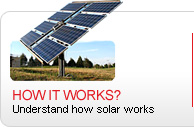 |
 |
 |
 |
 |
 |
 |
|
 |
| |

|
|
|
Green Technology
With the increase in carbon emission over the past decade, our environment has accumulated 50% CO2 over the past 50 years. Fossil fuels has been the main contributor towards this irreversible damage to mother earth. Under the Kyoto Protocol global nations has adopted a 5% CO2 reduction by 2013.
Global Warming is a devastating issue we cannot afford to ignore. According to Intergovernmental Panel on Climate Change (IPCC), the average Global surface temperature increased 0.74 ± 0.18 °C (1.33 ± 0.32 °F) during the last century. This seemingly insignificant increase in the average temperature can in fact have deadly impact on our globe. Studies have shown that increasing global temperature will cause sea levels to rise and will change the amount and pattern of precipitation, which may lead to the expansion of subtropical deserts. Some of the other environmental impacts include:
 Continuing retreat of glaciers, permafrost and sea ice, especially in the Arctic region Continuing retreat of glaciers, permafrost and sea ice, especially in the Arctic region
 Shrinkage of both the Amazon rainforest and Borneo forests Shrinkage of both the Amazon rainforest and Borneo forests
 Increases in the intensity and frequency of extreme weather events such as floods and typhoons Increases in the intensity and frequency of extreme weather events such as floods and typhoons
 Heat waves Heat waves
 Drastic changes of agricultural yields Drastic changes of agricultural yields
 Extinction of various species extinctions Extinction of various species extinctions
 Millions of life affected as the result of these natural disasters Millions of life affected as the result of these natural disasters
 Global warming is one of today's greatest threats to mankind. Global warming is one of today's greatest threats to mankind.
Endorsed by more than 40 scientific societies, the IPCC further concludes that global warming is, for the most part, contributed by the immense accumulation of greenhouse gases emitted by humans, namely carbon dioxide. Greenhouse gases are usually released as the byproducts during industrial processing and power generation through burning coal, gasoline and oil.
A Leading Form of renewable energy source, KT System is an advocate for Solar energy as the perfect solution to help alleviate global warming. Every day, the sun shines on earth and emits more than enough energy for over 3.5 billion population globally. Through photovoltaic technology, we can effectively convert this light energy from the sun into electricity and put into our daily use. Most importantly, solar energy is free of CO2 and essentially inexhaustible.
July 2009 ?Malaysia has adopted the “National Green Policy” where the Government promotes the use of Green Technology or Renewal Energy as the 5th Source of Energy powering the country’s needs. The Green Energy includes :
|
 Solar Solar
 Wind Wind
 Hybrid Hybrid
 Biomass Biomass
 Bio Gas Bio Gas
|
As the price of crude oil fluctuates and the major contributor to environmental damage, nations worldwide are adopting Green Energy as a priority to have a green energy as the major source of renewable energy to save Earth from irreparable damage.
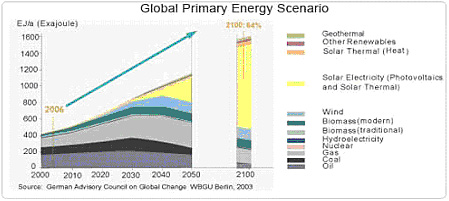
|
|
How it works?

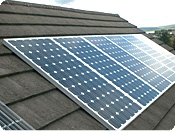 
|
Solar energy, powered from the sun, is free and inexhaustible. This abundant, reliable and clean energy resource offers a viable alternative to fossil fuels which pollutes our air and water, threaten our public health, and contribute to global warming. The amount of radiation from the sun that falls on Earth's surface is enormous. Even all the energy stored in Earth's reserves of oil, coal, and natural gas is matched by the energy from just 20 days of sunshine. The sun's energy contains about 1,300 watts per square meter irradiance.About one-third of this light is reflected back into space, and some is absorbed by the atmosphere.
Solar cells are high technology devices constructed of semiconductor materials (such as silicon) that converts the sunlight energy into electricity. Solar cells are manufactured with a built-in electric field, so when sunlight strikes the cell, a portion of the light is absorbed by the semiconductor materials. The solar energy knocks electrons loose from their atoms, allowing electrons to flow freely. The built-in electric field forces electrons freed by light absorption to flow in a certain direction that generates electricity, which can be drawn off to power various objects. The process of converting sunlight (photons) to electricity (voltage) is called the “photovoltaic effect”.
Photovoltaic system, semiconductors are produced in the form of cells, which are then assembled in a structural panel.Depending on the amount of electricity required, these panels can then be connected in an array of any size to provide the electricity needed for a home, office, or larger facility from kW, MW and GW configurations.
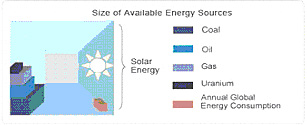
|
How to Produce Solar Cells?
Polysilicon
The productions of most PV modules start with manufacturing ultra-pure raw polysilicon, which is essentially the same material used to manufacture integrated circuits (ICs) such as computer or memory chips. It is done through several melting and washing steps of quartz sand.
Wafer
The liquid silicon is cast in blocks, which is also known as ingots. These ingots are then cut into thin discs, or wafers.
There four major commercial wafer manufacturing techniques:
 Mono-crystalline Wafers Mono-crystalline Wafers
 Multi-crystalline Cells Multi-crystalline Cells
 Polycrystalline String Ribbon Polycrystalline String Ribbon
 Amorphous Cells Amorphous Cells
Cell
A PV cell consists of two thin layers of semi-conducting silicon. Each layer is "doped," or infused with a small amount of another material that prevents all the electrons from being locked in the pure silicon lattice structure.
One layer is doped (usually with phosphorus) so that it has slightly too many electrons, and the other layer is doped (usually with boron) so that it has slightly too few electrons. This difference produces a small electric field between the two layers, which gives the electrons a direction to flow when they get knocked out of place by a photon (packet of light energy).
There are three major steps in making cells from wafers: |


 |
Doping – create a built-in electric field via gas diffusion, heat diffusion, or spray diffusion of phosphorus
Anti-reflective coating – apply a layer of silicon nitride (SiN) which offers both anti-reflective properties and surface passivation. This passivation acts act as recombination centers in the material by saturating the dangling bonds.
Metallization – A grid-like metal contact made up of fine "fingers" is screen-printed onto the front surface and the metal contact is made on the back surface. |
| |
|
| |
|
|
| Cost effective,how? |
|
 |
Solar Key Advantages
Economical Benefits:
|
 The energy from the sun is practically free, after the initial ROI recovered
The energy from the sun is practically free, after the initial ROI recovered
 Solar energy reduces our dependence on conventional source of energy Solar energy reduces our dependence on conventional source of energy
 Solar energy supports local jobs and creates wealth, which elevates local economies Solar energy supports local jobs and creates wealth, which elevates local economies
|
Environmentally Friendly:
|
 Solar energy is clean, quiet, renewable and sustainable unlike other conventional energy sources such as gas, oil, and coal Solar energy is clean, quiet, renewable and sustainable unlike other conventional energy sources such as gas, oil, and coal
 Solar energy does not contribute to global warming, acid rain, or smog, on the contrary, it helps to lower harmful green house gas emissions Solar energy does not contribute to global warming, acid rain, or smog, on the contrary, it helps to lower harmful green house gas emissions
|
Independent/Semi-Independent:
|
 Solar energy reduces our dependence on foreign or centralized sources of energy Solar energy reduces our dependence on foreign or centralized sources of energy
 Solar energy can reduce your utility bills, and also supply electricity in the event of a power outage Solar energy can reduce your utility bills, and also supply electricity in the event of a power outage
 Solar energy systems can operate entirely independent from a power grid; therefore systems can be installed in remote location Solar energy systems can operate entirely independent from a power grid; therefore systems can be installed in remote location
|
Low or no Maintenance:
|
 Solar energy systems are virtually maintenance free and last for a period of at least 25 years Solar energy systems are virtually maintenance free and last for a period of at least 25 years
 System are scalable in the future as your electricity needs grow System are scalable in the future as your electricity needs grow
 Systems operate silently, and have no moving parts Systems operate silently, and have no moving parts
|
|
Product Overview |
|
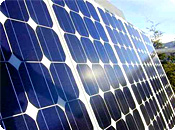 |
 |
Solar Modules
We supply a broad portfolio of high-quality solar modules from 50W to 240W outputs designed for a variety of grid-connect, off-grid and mobile applications.
Our product quality is backed by our warranties:
|? 5 year product warranty
|? 12 year warranty on 90% of minimum output
|? 25 year warranty on 80% of minimum output
|? IEC standard certified |
| |
|
|
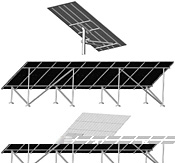 |
|
Mounting Systems
Our range of mounting systems is second to none in design and engineering. They are corrosion resistant and have a 10 year product warranty. Made of aluminium and special steel, you can be guaranteed of high durability and complete recyclability. KT systems are specifically developed to suit the most challenging of terrains and conditions.KT roof mounting systems, developed for pitched and flat roofs respectively, are packed with innovative features, such as the quickstone clamping system and telescopic rails. KT mounting system offers simple, fast and safe installation. |
| |
|
|
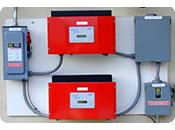 |
|
Inverters
Inverters are the heart of every solar power system. The pre-requisite for a well designed system is the careful matching of modules and inverters. KT offers a wide range of grid-connect and off-grid inverters, which have been tested for years in the field and offers the highest degree of reliability, efficiency and user-friendliness.
|
| |
|
|
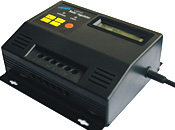 |
|
Charge Controllers
Solar charge controllers offer the important link between solar modules and batteries for standalone systems. They are key factors in ensuring that batteries are charged in an optimal and reliable manner. Our charge controllers series of charge controllers offer convenience, flexibility, and reliability; and are the optimum solution for compact, standalone solar systems. |
| |
|
|
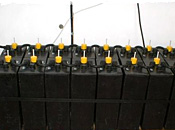 |
|
Batteries
In standalone systems, energy storage is the main cost driver and is a key consideration. It is essential to have the best quality batteries specific to the application. KT offers a wide range of batteries to meet the special requirements of standalone systems to ensure optimal performance – low maintenance, deep discharge and high cycle capability. |
| |
|
|
|
| |
|
|
| Save the earth |
|
 |
Industry Key Driver
We believe the following factors have driven and will continue to drive the growth of the solar energy industry.
Growing Electricity Demand and Supply Constraints:
Worldwide demand for electricity is expected to increase from 16.1 trillion kilowatt hours in 2002 to 31.7 trillion kilowatt hours by 2030, according to the International Energy Agency, or IEA. The IEA also estimates that over 66% of the world's electricity is generated from fossil fuels such as coal, natural gas and oil. Declining fossil fuel reserves and escalating electricity consumption are driving up wholesale electricity prices, resulting in higher electricity costs for consumers and highlighting the need to develop technologies for reliable and sustainable electricity generation. In addition to generation challenges, the electric grid infrastructure in many parts of the world is in need of substantial upgrades.
Government Incentives for Solar Power:
Today’s governments are attempting to reduce their dependence on foreign sources of energy because of the political and economic instability in many oil and gas producing regions of the world. Solar power offers an attractive means of power generation without relying extensively on foreign energy resources. In addition, increasing environmental concerns and climate change risks associated with fossil fuel-based power generation have created political momentum to implement greenhouse gas reduction strategies aimed at the reduction of emissions of carbon dioxide and other gases. Solar power and other renewable energy sources help address these environmental concerns.
Globally authorities have implemented a variety of policy initiatives to accelerate the development and adoption of solar power and other renewable energy sources. Examples of customer-focused financial incentives include capital cost rebates, feed-in tariffs and tax credits. Capital cost rebates provide money to partially offset the consumer's upfront investment in a solar system. Feed-in tariffs require utilities to pay customers for the electricity they generate with solar systems based on kilowatt-hours produced, at a rate generally guaranteed for a period of time
Save the EARTH (Reduce, Reuse and Recycle)
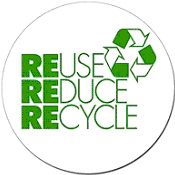
Reuse. Reuse can be accomplished by putting items we are tempted to throw away to use in our daily lives. Look for new ways to reuse an item before throwing it in the garbage. If you can't think of a way to reuse your item, you can offer it to other people. Freecycle is a global organization with local chapters in each area. The local chapters are Yahoo email groups. You can get online and offer your items to others. If there isn't a chapter in your area, it isn't difficult to start one. Food scraps can be reused by composting and returning the food to the earth. This is a great way to fertilize your garden or plants as well.
Reduce. Reducing can be accomplished in two ways. By reusing (the next step) you can reduce waste. You can also reduce the amount you use by taking steps to use less. Use less energy, use less product, use less gasoline. In otherwords, be frugal
Recycle. Recycle anything that would end up as waste by setting up bins in your home for recycling paper, plastic, cardboard, glass, and aluminum. Recycling further reduces the waste we each produce by putting the materials back into use rather than filling up landfills.

|
|
|
|
| |
| |
|
 |
|
|
| |
|
|
|
 |
 |
 |
 |
|
 |
 |
|

